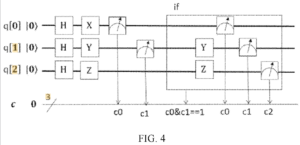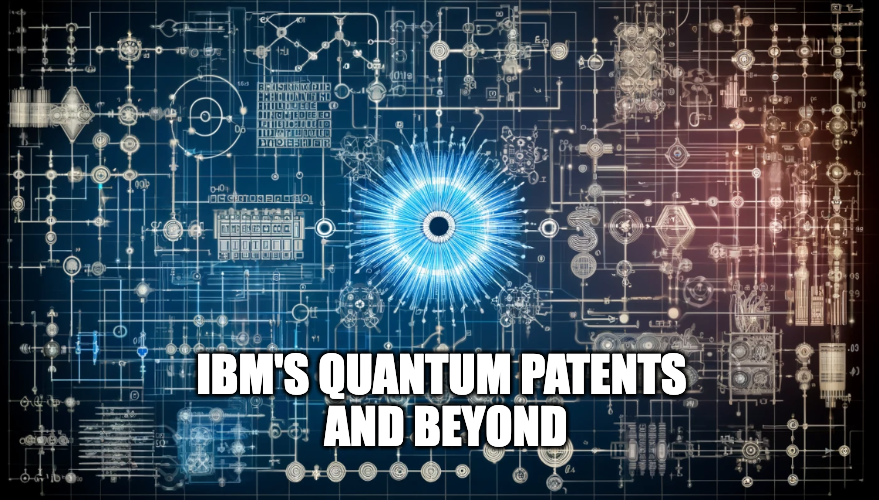Insider Brief
- IBM is America’s most prolific patent holder in 2023 with 3,953 granted patents.
- A growing number of these patents are in the field of quantum information science.
- While the number of Big Blue quantum patents grows, other firms and individuals are using IBM Quantum products for their own product innovations and investigations into the quantum world.
IBM is America’s most prolific patent holder in 2023, according to a study by small business lender OnDeck.
The study found that IBM is America’s most innovative company, with 3,953 patents granted in 2023. While IBM has a sprawling intellectual property — IP — portfolio, but the company’s IP that protects its quantum computing advances is growing.
In this article, we will focus on the growing number of quantum patents in that portfolio. It’s also important to note that IBM’s quantum IP portfolio is involved in another aspect of the patent-collection process: Many companies are now relying on IBM Quantum — both research and the actual equipment — to build their own collection of patents and other forms of intellectual property. We will also cover some recent examples of those efforts, relying on The Quantum Insider Market Intelligence Platform.

Examples of IBM Quantum Patents
Here are some of the most recent and relevant patents found in The Quantum Insider’s Market Intelligence Platform that may require quantum science, or directly impact quantum computing. The descriptions of the inventions based on the applicants’ abstracts.
Assembly of a Chip to a Substrate
This patent describes a method for bonding a semiconductor chip to an organic laminate substrate. At a specific bonding temperature, solder is used to attach the chip to the substrate. Without allowing the assembly to cool, underfill is dispensed between the chip and substrate, followed by curing at a higher temperature. Another method detailed involves applying solder to the substrate’s pads and chip pillars, enabling bonding through direct contact.
Synchronizing Physical and Virtual Environments Using Quantum Entanglement
IBM scientists wrote this patent to cover a technique for connecting physical and virtual environments through quantum entanglement. It captures video of a physical object and detects a feature in the footage. A first qubit is encoded based on the feature’s value, and is then entangled with a second qubit, forming a qubit pair. The second qubit’s quantum state informs the rendering of a virtual object corresponding to the physical one, creating a synchronized virtual environment.
Pulsed Stark Tones for Collision Mitigation
This patent presents techniques for mitigating cross-resonance collisions in qubits using Stark tone pulses. A tone management component manages the application of pulses by a tone generator to prevent frequency collisions. The tone generator can apply an off-resonant tone pulse to a qubit, inducing a Stark shift, and a cross-resonance tone pulse to a control qubit, which can also affect its frequency. The patent also outlines various types of gates, such as cross-resonance, two-qubit, and measurement gates, which can use echo sequences or other techniques.
Cryogenic Filter Modules for Scalable Quantum Computing Architectures
This patent describes systems, devices, and methods for signal filters in scalable quantum computing architectures. The device includes a multi-layered circuit board, with each layer made of different absorptive materials, and signal lines passing through them. A layer can filter signals passing through it, ensuring each line’s proper functioning.
 Coupling Data Quantum Bits to Auxiliary Quantum Bits
Coupling Data Quantum Bits to Auxiliary Quantum Bits
This patent outlines a device featuring a data qubit, first and second qubit couplers, and an auxiliary qubit. The first coupler connects to the data qubit, and the second coupler connects to the first and the auxiliary qubit. The couplers can suppress or enable interactions between the data and auxiliary qubits, allowing them to be entangled for various quantum computing operations.

Examples of IBM Quantum Patents That Use or Reference IBM
In the following granted patent applications, we find that either IBM is referenced in prior art, or that IBM Quantum equipment was relied on as part of the invention-creation process.
Compiler for Quantum Processors
This patent outlines a computer system and method for compiling programs to run on quantum processors with multiple qubits or audits. The system includes a compiler with four modules: a unified level module that refactors code written in a unified language and converts it to a first code, a high-level module that compiles this first code into a second code supporting loops, subroutines, and flow control, a low-level module that converts the second code into a third code containing quantum gate operations, and a gate-level module that converts the third code into a fourth code expressed in a quantum gate-level language, following the target quantum processor’s instruction set and constraints.
IBM’s patent is referenced in prior art.

Semi-quantum secure multipartite summation method
This patented invention introduces a semi-quantum security method for multiparty summation, utilizing high-dimensional entangled states and single states. A quantum server prepares an entangled state and applies a quantum Fourier transform to each particle, combining them with a sequence of single states sent to classical users. Users either measure and send the particles back or return them directly, allowing the server to perform specific measurements post-operation. This process verifies the presence of eavesdroppers and the server’s integrity, establishing a key for users to encrypt their data sent to the server. Finally, the server aggregates this data to produce and publish a sum, enhancing secure multiparty computations.
The application specifically mentions IBM Qiskit, which can be used to simulated quantum states and measurements.
Quantum technology-based gene search BLAST acceleration method and system
A new invention introduces a gene search BLAST acceleration method and system leveraging quantum technology to enhance the classical BLAST algorithm. The method is divided into three parts: the first part employs quantum computation to reduce the time complexity of BLAST, breaking through computational bottlenecks. The second part simplifies the quantum circuit used in the acceleration process, reducing both the time and space complexity of these circuits. The third part offers a straightforward quantum wire mapping scheme for implementation on physical quantum computers.The method significantly improves the efficiency of the BLAST algorithm and reduces the space complexity of the corresponding quantum circuits.
Robot path planning method adopting quantum clustering based on quantum ant colony algorithm
A new invention introduces an advanced method for robot path planning that employs quantum clustering combined with a quantum ant colony algorithm to address large-scale path planning challenges. This method breaks down a large-scale path planning problem into smaller, more manageable components. It assesses whether the available quantum computing resources can handle these smaller problems; if not, it further decomposes them until they align with the current computational capacity. Once the small-scale problems are within the processing capability, the quantum ant colony algorithm is used to solve each one individually. The solutions are then aggregated to derive an optimal path for the original large-scale problem, significantly enhancing the feasibility of large-scale path planning with quantum technology.
The Future of IBM’s IP Legacy
Since its inception, IBM has been an invention-creating behemoth. Some are wondering how long that dominance will last.
Just recently, several media sources reported that IBM overhauled its longstanding rewards program for inventors, causing frustration among some employees who feel they are losing out on bonuses.
The company has discontinued its “Invention Achievement Award Plan,” which incentivized employees to file patents and publish articles with points that could be exchanged for cash rewards.
Under the old system, employees received points for successful disclosures, publications and patent filings, with significant bonuses awarded once they accumulated 12 points, according to a report by The Register.
The newspaper reported that the elimination of this program also means the nullification of unredeemed points, effectively erasing a financial obligation for IBM and preventing these points from being converted into monetary awards.
It remains to be seen what effect this will have on overall patent production at IBM and, specifically, whether that will alter IBM’s growing collection of quantum-related patents.
















